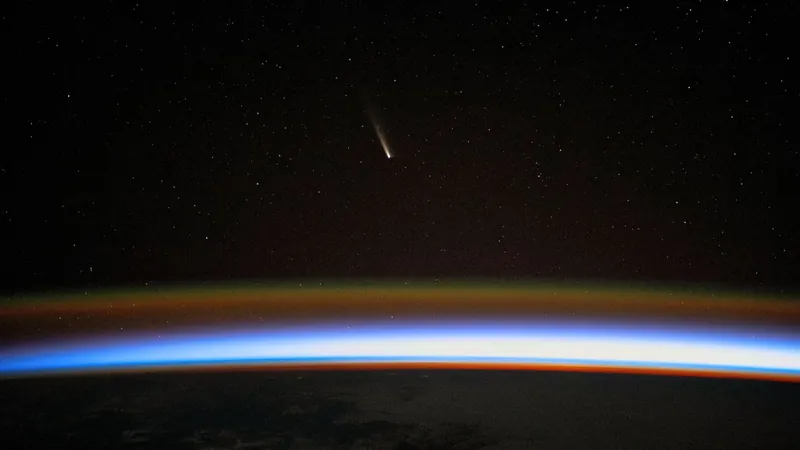
Rare Dual Comet Sightings: 'Sungrazer' Comets Could Dazzle Night Skies This Month!
2024-10-08
Author: Mei
Exciting Astronomical Events in October
A dazzling astronomical event is set to unfold this October as two remarkable comets, Tsuchinshan–ATLAS and C/2024 S1 (ATLAS), are predicted to be visible to the naked eye. Enthusiastic skywatchers will have the opportunity to witness this once-in-a-lifetime spectacle as these comets make their closest approaches to Earth.
Tsuchinshan–ATLAS
Tsuchinshan–ATLAS has been capturing the attention of stargazers since it was first identified at the start of 2023. Initially thought to face disintegration as it neared our planet—an event that occurs with many comets—this celestial body has proven resilient. It will reach its closest approach to Earth on October 12, making it an excellent target for those wishing to capture stunning photographs. However, as this spectacular comet begins to fade in visibility, time is of the essence for enthusiasts eager to see its brilliance.
Discovering C/2024 S1
The excitement doesn't stop there! On September 27, a new comet was discovered by astronomers working with Hawaii's Asteroid Terrestrial-impact Last Alert System (ATLAS). Known as C/2024 S1, this comet will make its closest approach to Earth just over a week later, on October 24, at a distance of approximately 81.8 million miles (131.6 million km). Although little is known about its structure and makeup, it is likely originating from the Oort Cloud—a vast reservoir of icy bodies located at the edge of our solar system.
The Sungrazer's Close Encounter
But what makes C/2024 S1 particularly fascinating is its classification as a "sungrazer" comet. It will skim just 765,000 miles (1.2 million km) from the sun on October 28. This perilous approach raises the question of whether it will survive the intense heat and gravitational forces experienced during such a close encounter. Notably, previous sungrazers have met with disaster; a comet observed on April 8 disintegrated shortly after making a similar pass.
Unique Characteristics of C/2024 S1
The unfolding drama intensifies as early images of C/2024 S1 display a striking green glow, a rarity among comets. This unique coloration is attributed to dicarbon, a molecule that forms when two carbon atoms bond together in the comet's coma and tail. Comets displaying this vivid hue add an extra layer of allure to their celestial appearances.
Viewing Opportunities
For those eager to catch a glimpse, C/2024 S1 will shine brightly between October 24 and 28, potentially outshining Venus. However, the best viewing opportunities will occur just before sunrise, particularly in the Southern Hemisphere. Northern Hemisphere observers may have a chance to see it dimmer, between October 29 and 31, depending on whether the comet successfully handles its solar encounter.
Conclusion
In celebration of this cosmic event, astronomy enthusiasts worldwide are gearing up for a remarkable month. Whether through binoculars or simply gazing up at the night sky, witnessing the brilliance of these comets could be a truly unforgettable experience. Don’t miss the chance to witness this spectacular display of nature and the mysteries of our universe!




 Brasil (PT)
Brasil (PT)
 Canada (EN)
Canada (EN)
 Chile (ES)
Chile (ES)
 España (ES)
España (ES)
 France (FR)
France (FR)
 Hong Kong (EN)
Hong Kong (EN)
 Italia (IT)
Italia (IT)
 日本 (JA)
日本 (JA)
 Magyarország (HU)
Magyarország (HU)
 Norge (NO)
Norge (NO)
 Polska (PL)
Polska (PL)
 Schweiz (DE)
Schweiz (DE)
 Singapore (EN)
Singapore (EN)
 Sverige (SV)
Sverige (SV)
 Suomi (FI)
Suomi (FI)
 Türkiye (TR)
Türkiye (TR)